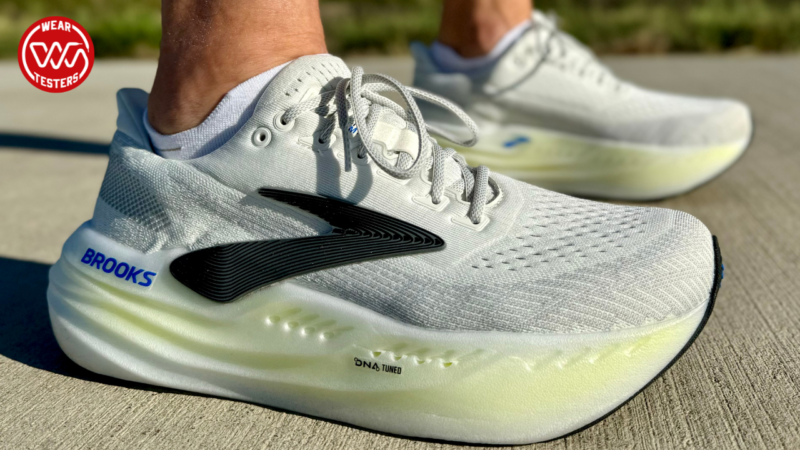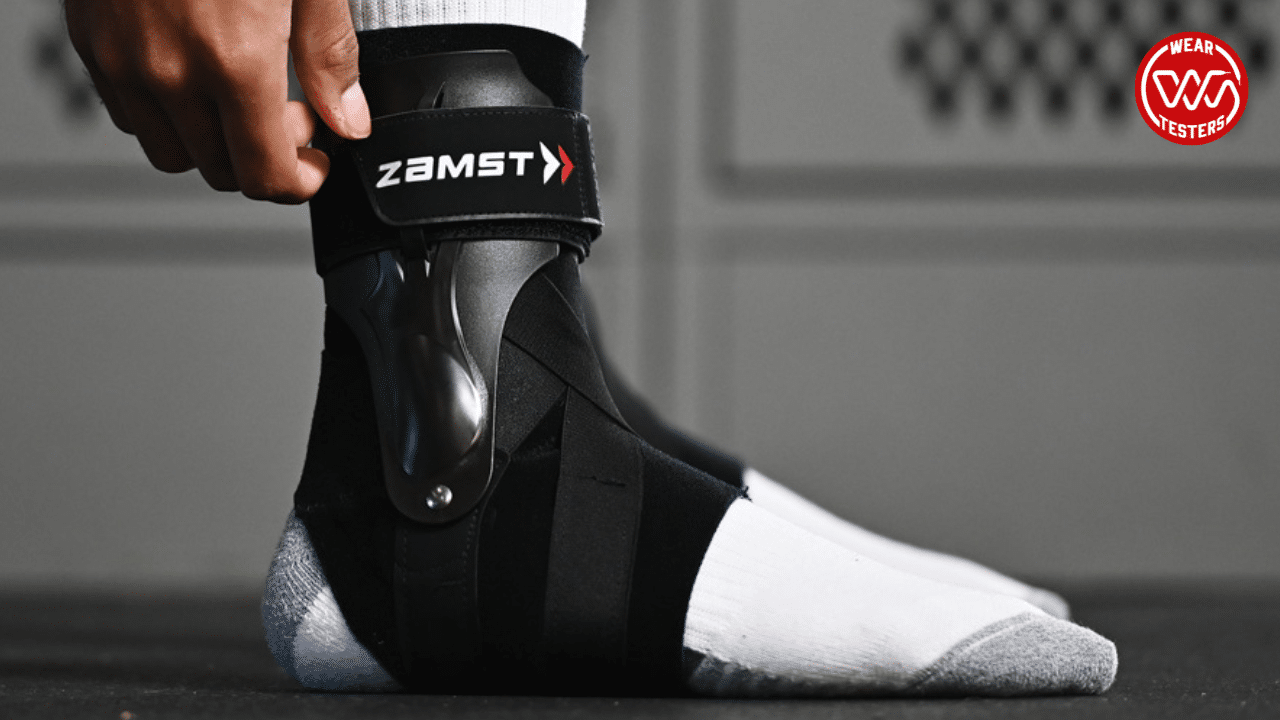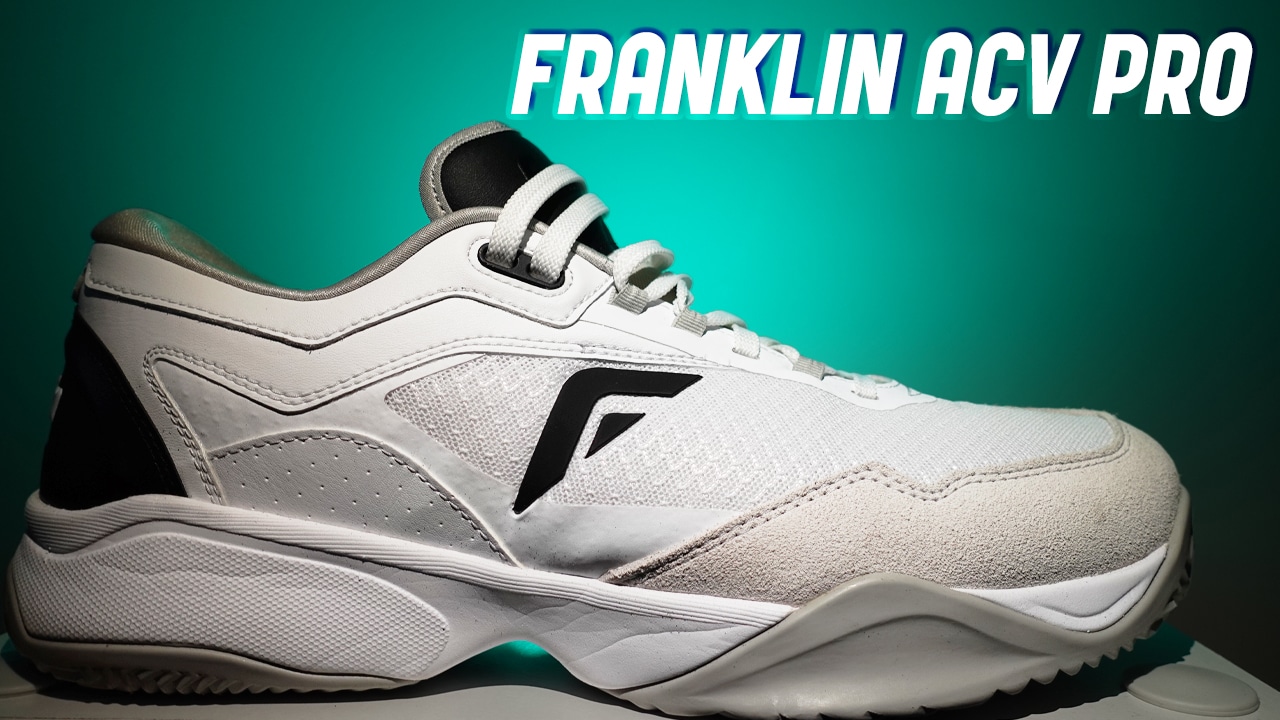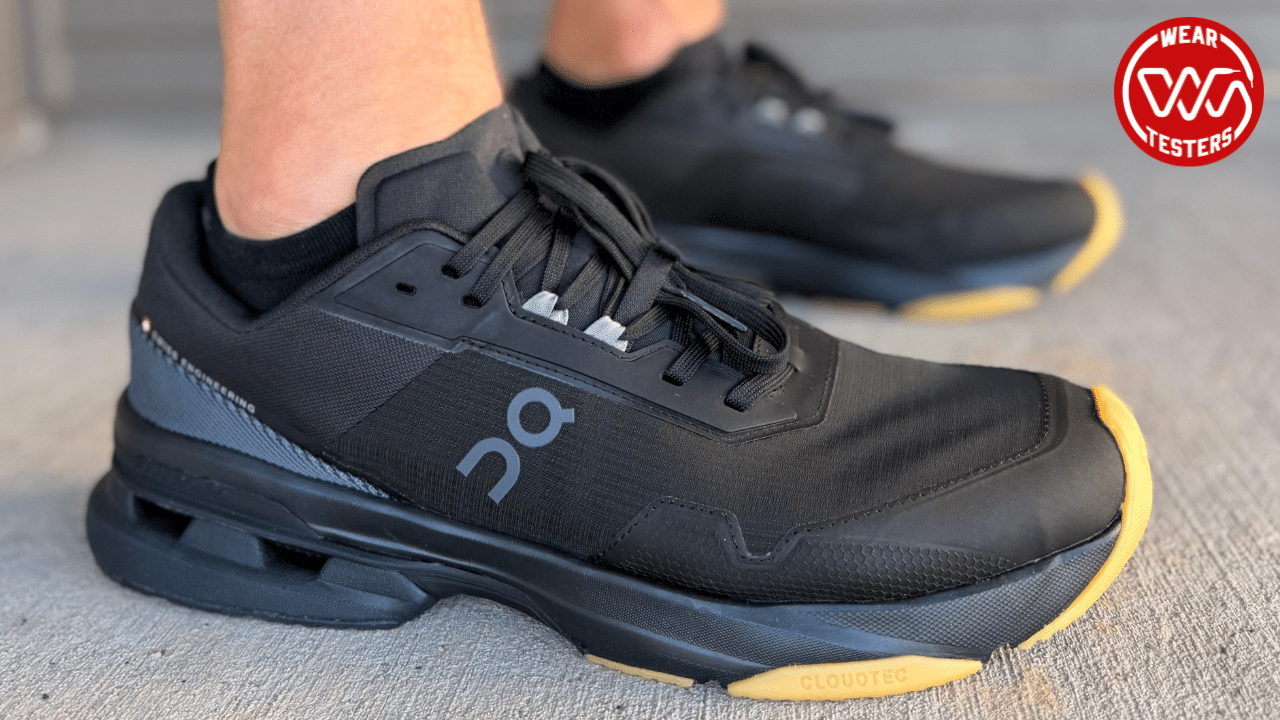The Brooks Glycerin Max takes an always reliable model, the Brooks Glycerin, adds A LOT more cushioning, introduces a new cushioning tech, and tweaks the rocker. The result? A massive shoe that makes Brooks’ other super trainer, the Hyperion Max 2, look normal by comparison.
After years of resisting the market’s slow march towards super stacked foam, Brooks is in the game and not holding back. But can this upstart* compete with the ruling class of super trainers led by the Asics Superblast 2 and the Puma MagMax Nitro? Let’s find out.
*[Editor’s Note: “upstart” with the No. 1 market share in adult performance running at U.S. national retail despite its slow adoption of super high stacks of foam]
Brooks Glycerin Max
Release Date: October 5, 2024
Price: $200
Weight: Men’s 10.5 oz., Women’s 9.5 oz.
Drop: 6mm
Sizing: True to size
- Rundown: DNA Tuned and an incredible bounce make the Brooks Glycerin Max, the brand’s first super trainer, a fun and intriguing shoe.
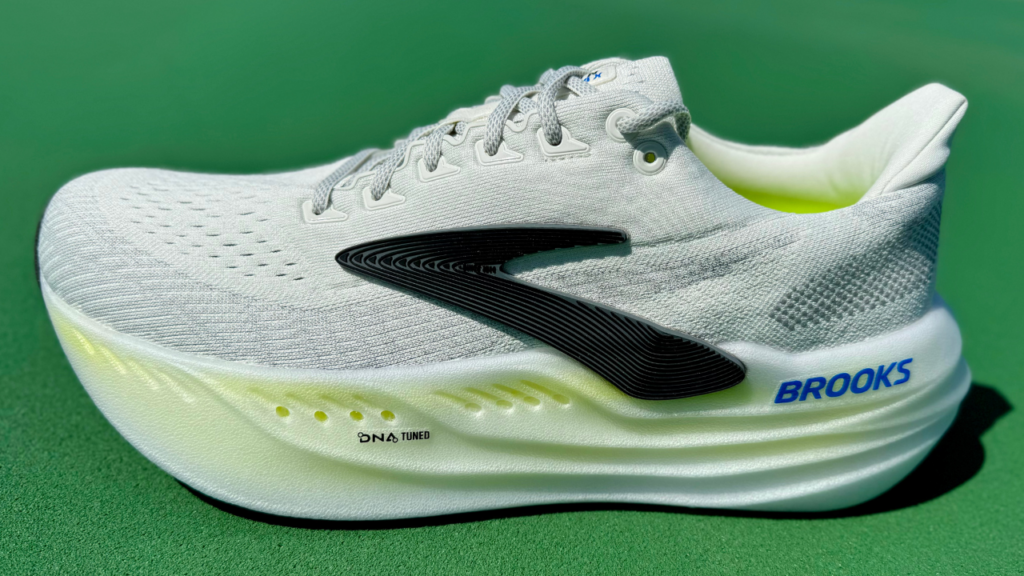
What is the Brooks Glycerin Max?
The Brooks Glycerin Max is a true super-max cushioned shoe with a heel stack height of 45.25 and a forefoot stack height of 39.25. Both, if my memory and research are right, are records for Brooks Running.
And if that’s not enough, Brooks uses an all-new foam called DNA Tuned. Like DNA Loft v3 and DNA Flash, it’s nitrogen-infused. Brooks also says it’s created using dual-cell technology. That means larger cells of foam in the heel help with cushioning heavy heel landings, while smaller cells in the forefoot improve responsiveness when pushing off the ground. The concept is similar to the dual density foams brands have used for well over 30 years. But, as we’ll talk about in the performance sections, the difference between heel and forefoot is much easier to feel.
The main section of DNA Tuned is also encased in a cage that has a higher density than the internal foam. This cage is not as dense and unyielding as what you’ll see in a basketball shoe like the Puma All Pro Nitro. This is exactly what I’d hope for in a running shoe with this setup because running doesn’t need as much lateral stability. The cage still does its job; and the foam, though very soft, is not as prone to instability around corners as in the majority of the best marathon racing shoes.
Brooks doesn’t name the outsole rubber, but it feels similar to what’s used on other Brooks models. Brooks does name the rocker, calling it a GlideRoll Rocker as they usually do. But this GlideRoll Rocker is aggressive in how it swoops up at the toe and heel. No Brooks race shoe has ever featured a rocker this pronounced, and again, as we’ll talk about, it creates a feel unlike any previous Brooks shoe.
The upper is where the Glycerin Max most follows the traditional Brooks running shoe playbook. It’s a layered engineered mesh, but the layers are sandwiched in such a way to allow direct airflow versus Brooks’ usual method of having air holes run into another layer of material. The tongue and heel collar are well-padded and provide that usual Brooks comfort around the bony areas of the foot.
Brooks brought a bunch of technology and shoe building tricks to bear along with their signature comfort in a promising way. So what did our two intrepid weartesters with markedly different running styles think?
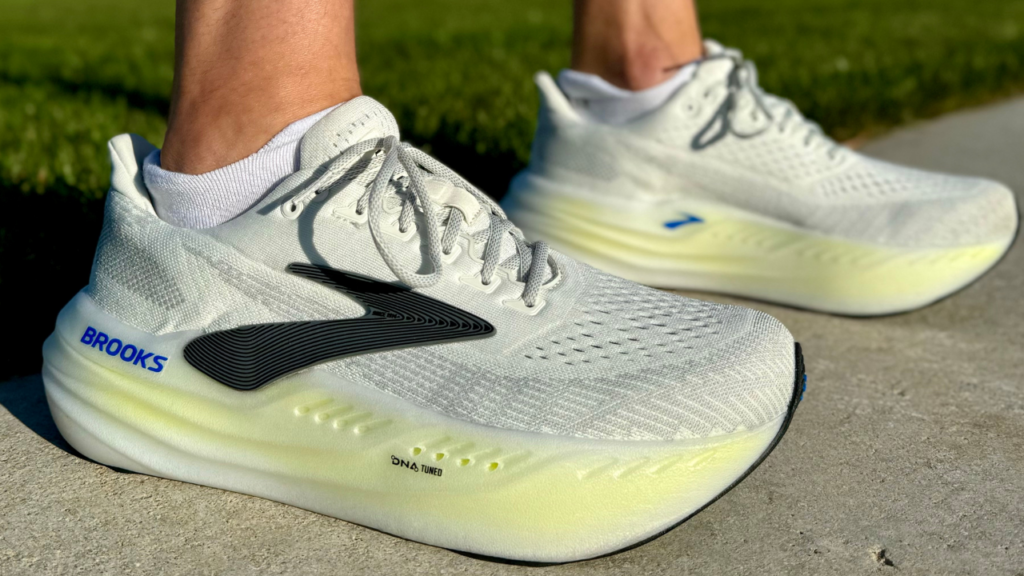
How did it perform for Drew?
Drew: What did I think? Holy bouncy forefoot! The combination of the DNA Tuned and GlideRoll Rocker just rockets my foot off the ground as my big toe pushes off. When I got home from my first run I had to double check the spec sheet Brooks sent over to make sure there wasn’t a plate inside the shoe. And there’s not. I triple checked.
The Brooks Glycerin Max is the bounciest shoe that doesn’t feature a plate. The Puma MagMax Nitro and Asics Superblast 2 are the closest, but they can’t match the speed at which the Glycerin Max accelerates toe-offs. It’s by far the most impressive aspect of the shoe and what I imagine will be the main selling point. It’s a fantastic way to add bounce and a whole lot of impact protection to any shoe rotation.
I found the DNA Tuned with this stack height and forefoot responsiveness to be a great companion on anything from easy runs, to long runs, to long tempo sessions. It’s a shoe that gets up to marathon pace or half marathon pace and helps the wearer stay there. The forefoot’s extra oomph really pays dividends as interval periods drag on for way too long. The forefoot bounce helped me maximize every push off as my legs got tired.
It’s also not a shoe that feels heavy, so it shines on long runs even as the body gets super tired from two plus hours on foot. The midsole is just superb.
The rest of the shoe is solid, but could be better. The outsole grips well and is hardly showing wear after 50-ish miles. But it’s a pebble scooper. The grooves in the rubber pattern are just too thin. Every day I wore the Brooks Glycerin Max, I came home with 5-10 little pebbles embedded in each outsole. And they get stuck deep. I had to use a toothpick or tweezers to get them out. Not a dealbreaker, but it’s a small annoyance that could have been avoided.
As for the upper, it’s comfortable, but not quite up to Brooks’ lofty standards. The tongues badly need gussets as they consistently slipped to the lateral side of my feet in every run. Coming from the awesome tongue of the Hyperion Max 2 that stays locked in place, this was a bummer. Again, it doesn’t really affect performance, but it was annoying.
The upper itself is also rather shallow. I didn’t mind the lack of space above my toes (though some will). But I felt like the shallowness of the upper made the achilles pillows hit just a little lower than usual and not align with the area above my calcaneus (heel bone), instead mushing into it. That could be a problem for those with balky achilles or Haglund’s deformity. This will be a problem for some, but others won’t even notice it.
Despite these quibbles, the midsole is so good that I was willing to overlook the negatives of the upper and keep wearing the Brooks Glycerin Max at every opportunity. What about you Annie? Did you also feel it was the type of midsole you take home to meet the parents?
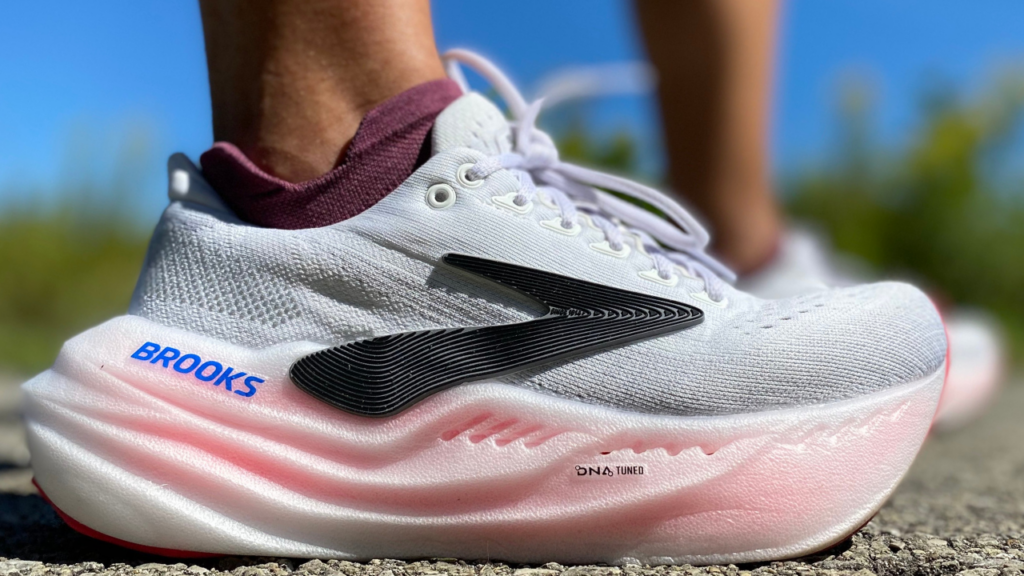
How did it perform for Annie?
Annie: I did, Drew – so much so, in fact, that my parents have given us their blessing and wished the Brooks Glycerin Max and me a very happy life together.
The DNA Tuned midsole here is seriously some intriguing stuff. In each of my post-run testing notes, I struggled with how exactly to describe the unique feeling underfoot. The best I’ve come up with is that I felt like my feet were being cradled by a high-end, luxury car’s suspension system. The softer, core cushioning provided comfort and imperviousness to bumps in the road, while the outer ring of foam provided sure-footedness and stability.
The dual-size cell technology Drew described, with the larger cells in the heel for squish and smaller cells in the forefoot for responsiveness, was something I loved but didn’t quite get to take full advantage of as a (mostly) midfoot striker. But downhill efforts really showed just how beautifully the concept comes together. The midsole already felt great to me; but I think heel strikers might fully lose their minds over how fabulous the DNA Tuned feels through every strike and transition – especially combined with all that smooth heel bevel and toe-springy goodness.
Weight was one of my complaints with the recently reviewed, 9.5 oz Brooks Ghost Max 2, and the women’s sample size Glycerin Max bears the same weight. But it just doesn’t feel like the same 9.5 oz in practice. The way the dynamic, DNA Tuned foam interacts with the geometry keeps you zipping along efficiently and with way more of a fun factor than found in the Ghost Max 2. Granted, that Glycerin Max fun comes with a price tag that’s $50 higher, but the two shoes are such “apples and oranges” that the direct price comparison is rendered kind of irrelevant in this case.
However, as a 5’0” runner, I’d still love to see the Brooks Glycerin Max’s weight come down even further to make the choice between it and something like the ASICS Superblast or New Balance Fresh Foam X Balos (review coming soon) even harder. But that might be splitting hairs, as each of those shoes has its own set of pros and cons, despite declaring a clear victory over the Glycerin Max in the weight column.
Similar to Drew, I found the Brooks Glycerin Max’s upper to be a solid, but imperfect aspect of the shoe. The tongue stayed put for me, but I needed to adjust the laces a bit more than expected in order to keep my foot from sliding forward on those otherwise freakishly comfortable downhills.
I likewise took note of the shallow feel above the toes (which could be in part due to the aforementioned toe spring – similar to what we found in the ASICS Noosa Tri 16). That isn’t an area I normally find myself needing extra volume in a shoe, so the fact that I was coming up against the upper there was surprising.
In fact, it was surprising to have any real upper complaints at all with a Brooks shoe, since I readily point to the brand as producing some of the best uppers in the biz. That said, the feeling of shallowness didn’t actually cause me any issues, such as abused toes/toenails, even after my longest test run of 2 hours and 45 minutes. Seeing as that also represents my personal longest run to date, the Brooks Glycerin Max clearly has my trust.
The outsole grip and durability didn’t disappoint, but I did find the same trend as Drew when it came to tiny pebble stowaways (though not to the same degree, since I’m not out here running rocky, Colorado terrain).
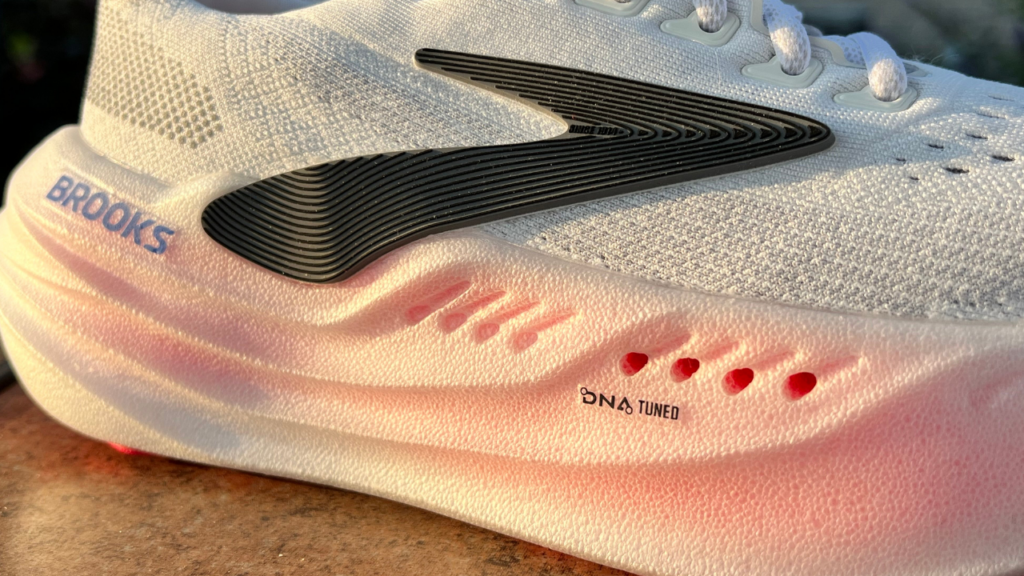
Pros
- Bouncy, poppy forefoot
- Aggressive, fun GlideRoll Rocker
- Record-setting stack of midsole foam (for Brooks)
- Impressive impact protection from the DNA Tuned midsole
- High-end stability despite the ultra-high stack height
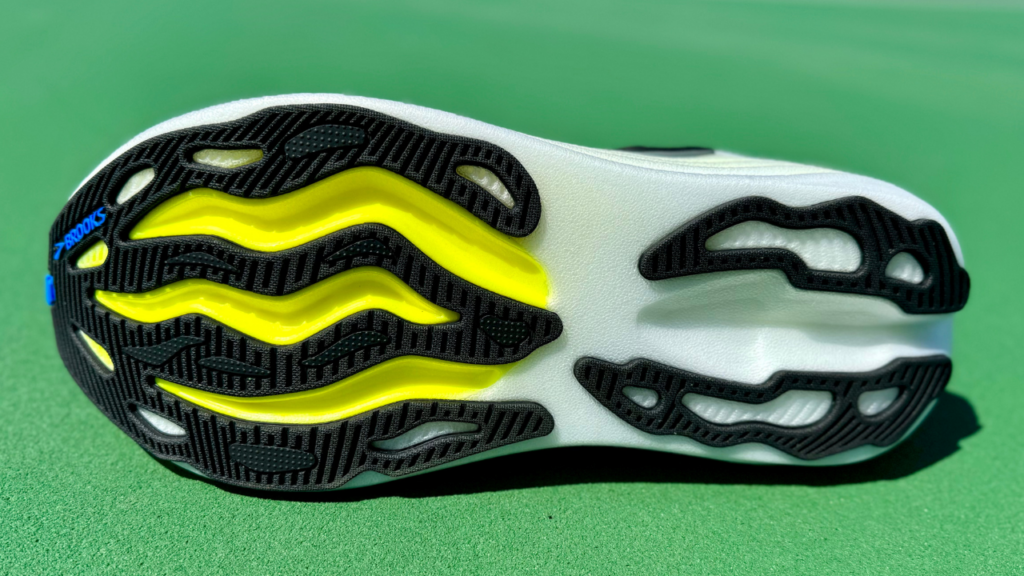
Cons
- Slippy tongue
- Shallow, structureless upper
- Pebble grabbing outsole
- Not quite as light as some of its competitors
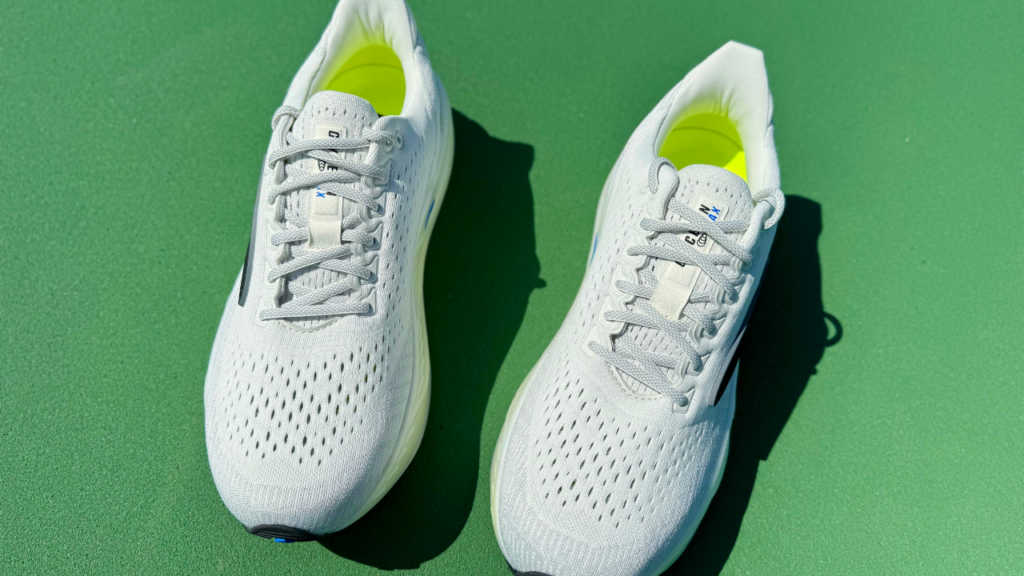
Is the Brooks Glycerin Max wide foot friendly?
Drew: Yes, The Brooks Glycerin Max is wide foot friendly. The forefoot and midfoot have a good amount of room. However, if you’re a tall footer – especially in the toes or midfoot – the Glycerin Max’s upper does not give your foot much room to breathe. The Brooks Glycerin Max does fit true-to-size lengthwise.
Annie: Drew said it. The upper is uncharacteristically shallow for a Brooks shoe, but the fit is overall TTS and friendly to most wide footers. As someone who always needs more room through the ball of the foot on the lateral side, I personally welcomed the reduced structure there and felt I had the width I needed in the Brooks Glycerin Max.
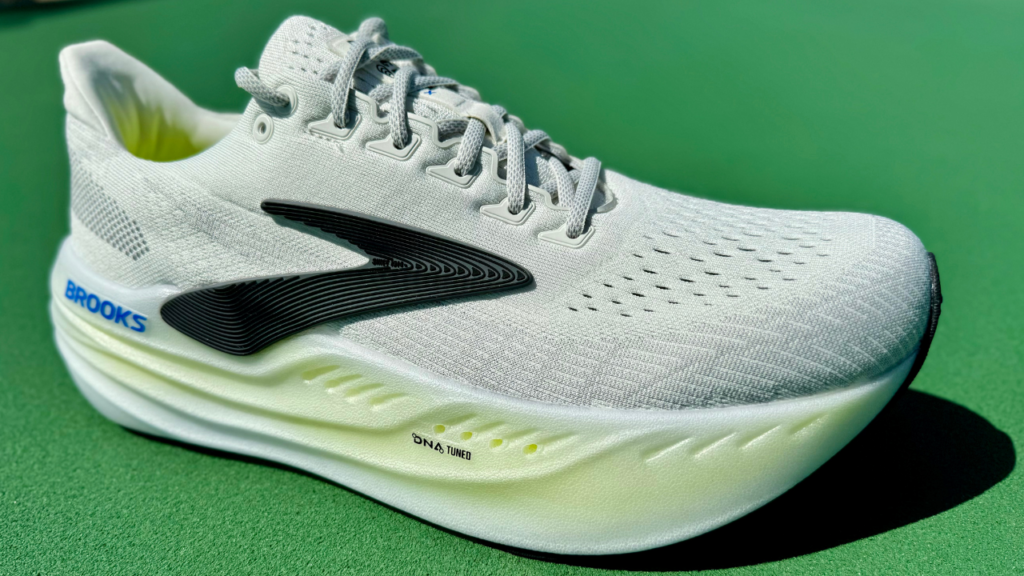
Is the Brooks Glycerin Max worth $200?
Drew: Yes, the Brooks Glycerin Max and its gloriously fat stack of DNA Tuned foam is worth $200. Durability looks to be impressive and that forefoot bounce must be experienced to truly understand its awesomeness.
Annie: Agreed. The midsole here is tough to put into words (see above where I started rambling about a car and its premium suspension package or some such). But if you’re able to comfortably swing the $200, I think you’ll understand and will find the Brooks Glycerin Max to be a ready training partner that brings its own flavor to the super trainer category.
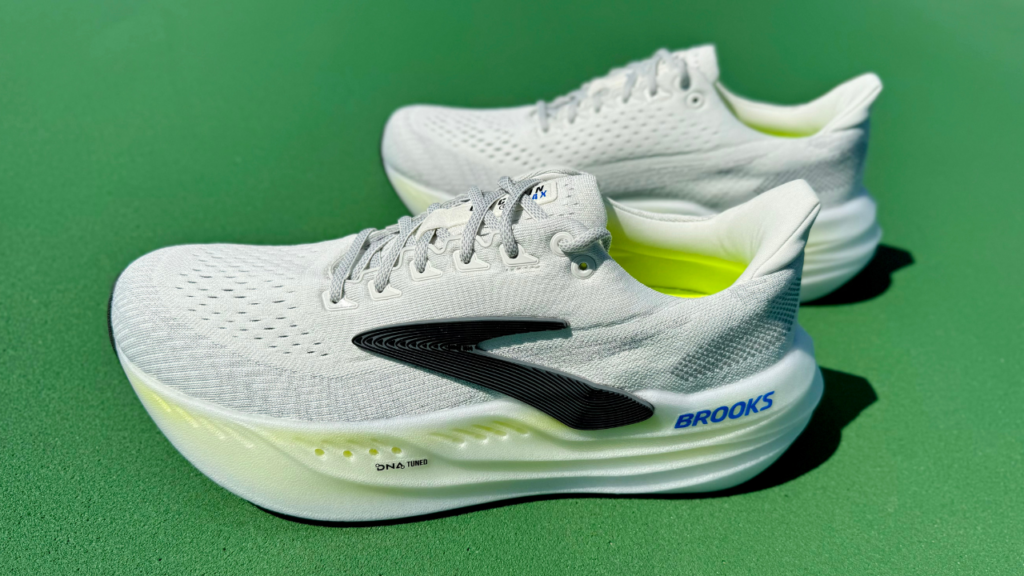
Brooks Glycerin Max Summary
Drew: At the conclusion of my Brooks Glycerin Max miles, when I had to leave it on the shelf to test the next shoe that arrived, a wave of sadness passed over me. I knew there was no way the next shoe would deliver that incredible forefoot bounce and all that juicy DNA Tuned foam. The Brooks Glycerin Max stays ready on the shoe shelf for when I need its max protection and toe-off assistance, but new adventures called.
The Brooks Glycerin Max isn’t perfect, and the upper did annoy me at times, but replacing that springy forefoot isn’t possible unless I’m testing a more expensive, plated shoe. Now, and this is written for the Brooks design team, how about adding DNA Tuned and this rocker shape to a few more shoes in the lineup?
Annie: Like Drew, I was always happy when it was the Brooks Glycerin Max’s turn in the testing rotation. On those fatigue-filled recovery runs, I knew I’d be lacing up a companion whose easy, fun personality would be kind to my body without dragging me down. And on those days when I was refreshed and looking to venture farther and a bit faster, the Glycerin Max never skimped on bouncy, quick transitions.
I imagine Brooks focused the majority of its attention on the new (awesome) midsole technology for this inaugural model. And given the fact that Brooks typically has uppers on lock, I have to have faith that the uncharacteristic (but not unforgivable) quirks found here will be resolved with the next version of the Glycerin Max – including some additional tweaks to the outsole pattern to prevent unsolicited, pebbly passengers.
Regardless, the company’s seemingly measured and patient approach to technology (which is sometimes criticized as too conservative) has really paid off here. DNA Tuned is an exciting step forward that takes full advantage of Brooks’ newer geometries and ultimately creates a unique, super enjoyable experience for the user. It seems good things do come to those who wait.
How does the Author Run?
Drew Whitcomb (age 42, 6’6″ 195lbs): Runs daily with a once a week rest day. Runs a lot of miles due to testing needs and a growing affinity for long-distance races. Regularly competes in marathons, half-marathons, 10k, and 5k races.
Annie Keris (age 39, 5’0” 117lbs): Typically follows a “two days on, one day off” running routine. “On” days include daily miles, speed work, and long runs. An “off” day usually involves yoga and mobility/recovery work. Enjoys occasional racing but perhaps enjoys the training process even more. Gravitates most toward the half marathon distance, but ventures into the 10k and 5k as well. The marathon is thus far uncharted territory…
Disclosure
While Brooks did send pairs of the Brooks Glycerin Max to facilitate this review, the company had no involvement in this review, didn’t receive an advance look at it, and has not attempted to influence it.

